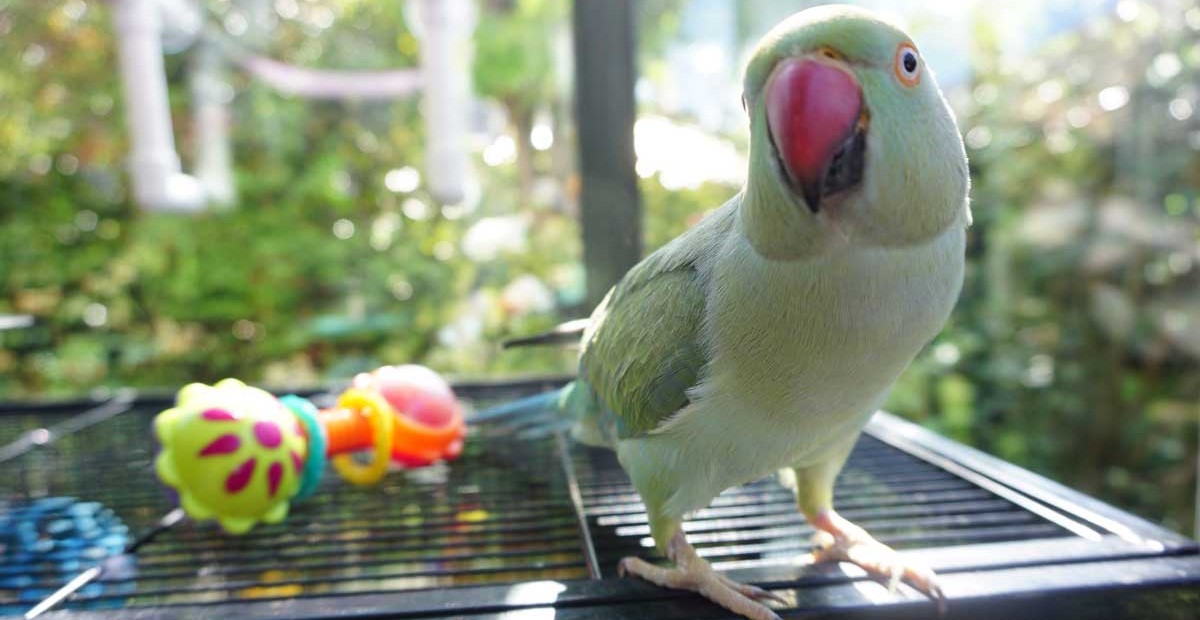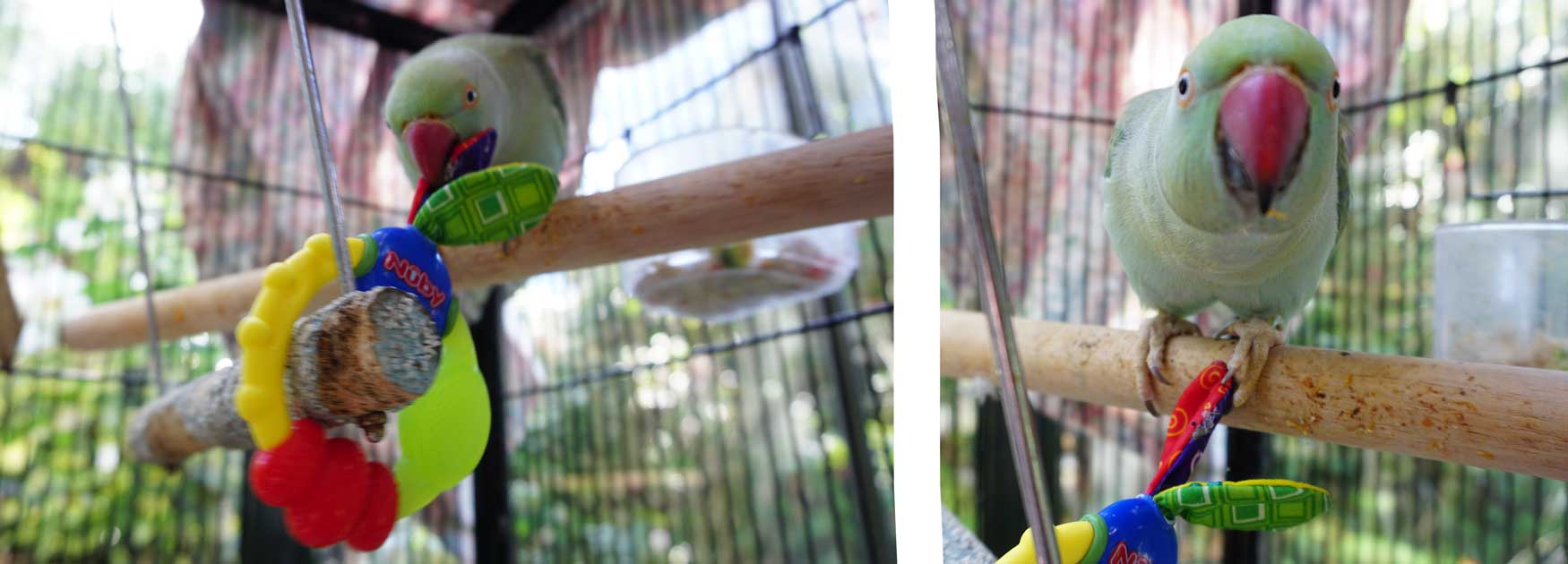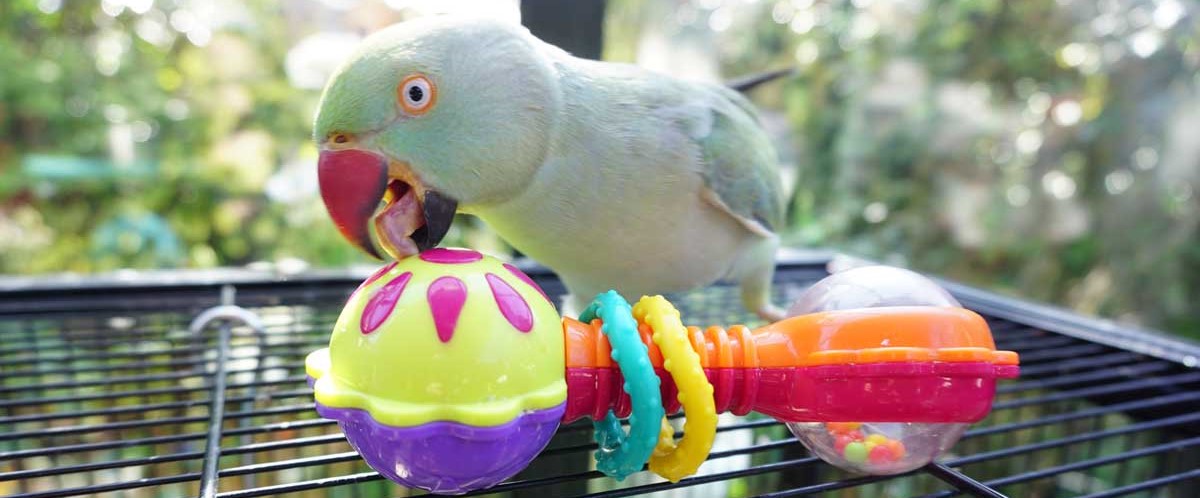
Purchasing safe, durable toys is a challenge I haven't yet mastered without spending exorbiant amounts of money, and even then, many have to be removed from my bird's cages after bringing them home because they contain small metal parts or unsafe materials such as rope or paint.
I was surprised when a friend of mine recommended that I look into buying baby toys for my parrots, but the more I researched the more I was convinced.
Why Baby Toys?
While building and prototyping our BeakBox toys last year, we spoke with multiple vets and a zoo consultant about bird toy safety.
I was shocked to learn that the most common case of injury to birds was from unsafe bird toys. My vet explained to me that although there plenty of current laws about animal welfare (based on New Zealand, UK, and USA legislation), this covers almost exclusively the treatment of pets by their owners - for example, legal obligations of pet owners, definitions of animal abuse, etc.
However, there is little or no written law describing what pet toys should or should not comply with in order to be safe for use. In other words, toy manufacturers can make anything they like and place it on the market for animal use.
It is up to the pet owner to ensure that their animal only has access to 100% safe toys.
When creating our BeakBox bird toys, we spent over a year prototyping and running our design by animal care professionals to ensure it was safe to use, while also writing our own "compliance" standards to be met at every step of the design process. Although processes like this should be the norm in pet toy industry, sadly steps like these are often neglected - as a result, you can find quite dangerous bird toys in pet stores that contain toxic elements like lead and zinc, non-safe fibers and small metal choking hazards.

On the other hand, there is plenty of written legislation surrounding baby toys. In New Zealand, the Fair Trading Act covers product safety and includes children's toys. This ensures that all baby toys available for purchase must be made to a specific, high standard ensuring these toys will not injure the children using them. These regulations include that toys must not:
- Be of a size that creates a hazard if swallowed, inhaled or placed in the mouth.
- Have small parts designed to be removed from the toy that will create a hazard if swallowed, inhaled or placed in the mouth.
- Have pieces that can break off during normal use or during reasonably foreseeable abuse and that create a hazard if swallowed or inhaled.
Although these rules have not been written specifically for birds, they do provide reassurance that baby toys will not break easily or contain poisonous elements which might hurt your pet.
Baby toys are obviously not designed to be used by a bird, they are designed to be used by a child that will bite, chew, throw and in general do their best to break whatever toy they have in their possession (so basically a bird), without any small parts breaking off or there being any risk of ingesting. In short, baby toys are guaranteed to be designed with safety and durability in mind, while bird toys are not.
What Toys Should I Look For?
- Teething Toys - Teething objects are designed to help babies use their mouth, and give them something to chew and bite while their new teeth are coming in. This means they are extra safe and guaranteed to contain no small, easily ingested parts which would otherwise provide a choking hazard.
- Noise-Making Toys - Toys like rattles are perfect for birds. They make noise when played with which makes them very interesting play-things, as birds are auditory learners and communicators.
- Hard Plastic Toys - Hard plastic is durable and does not shatter or break into small bits when chewed. While not ideal for large, strong-beaked parrots like Macaws and Cockatoos, it is nearly indestructible to smaller parrots and birds.

How to Use Baby Toys in Your Bird's Cage
Magick’s favourite toys are both baby toys. The first is a teething toy that is looped around one of her favourite perches. She loves the different textures and patterns on this toy which she chews and rubs her beak against.

Another of her faves is a small rattle, which she throws around the bottom of her cage to hear the sounds it makes. Again, this toy has different textures and colours which she is attracted to and enjoys interacting with.

Are There Any Dangers?
It should go without saying, but (most) birds are a lot smaller than a baby. This means that we need to be aware of any holes, openings, or attachments that may pose risk to small toes, beaks, or necks. According to our local vet, a very common cause of toy-related injury is birds catching a foot in small holes, or getting fibers wrapped around a body part while trying to interact with a toy.
As a responsible bird owner, you should always shop for your pet's specific requirements and look out for any risk posed by a new toy.
If you are looking for a safe and interactive toy for your flock, check our BeakBox store - we have toys for birds of all sizes: from tiny Budgies to mighty Macaws.